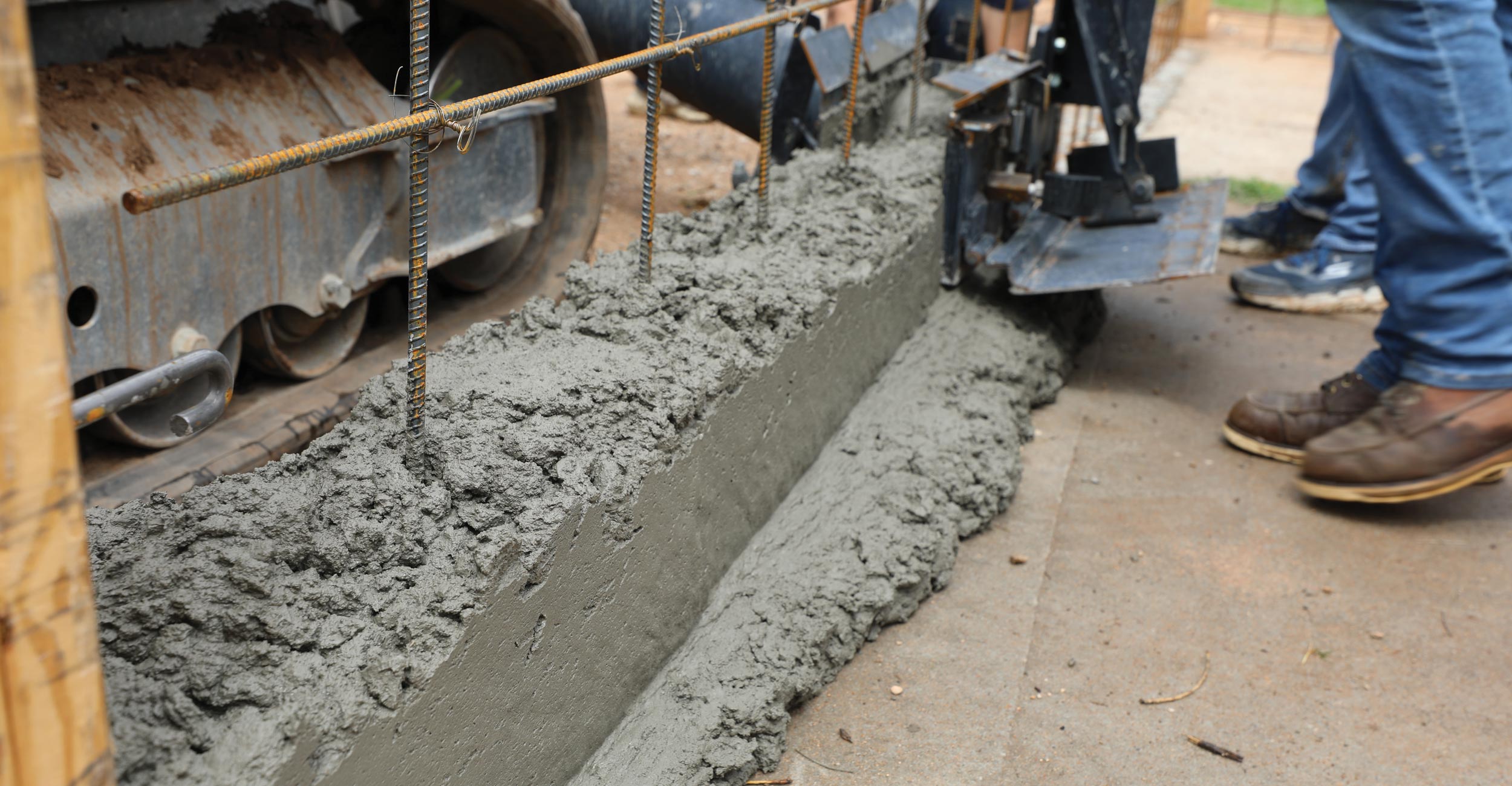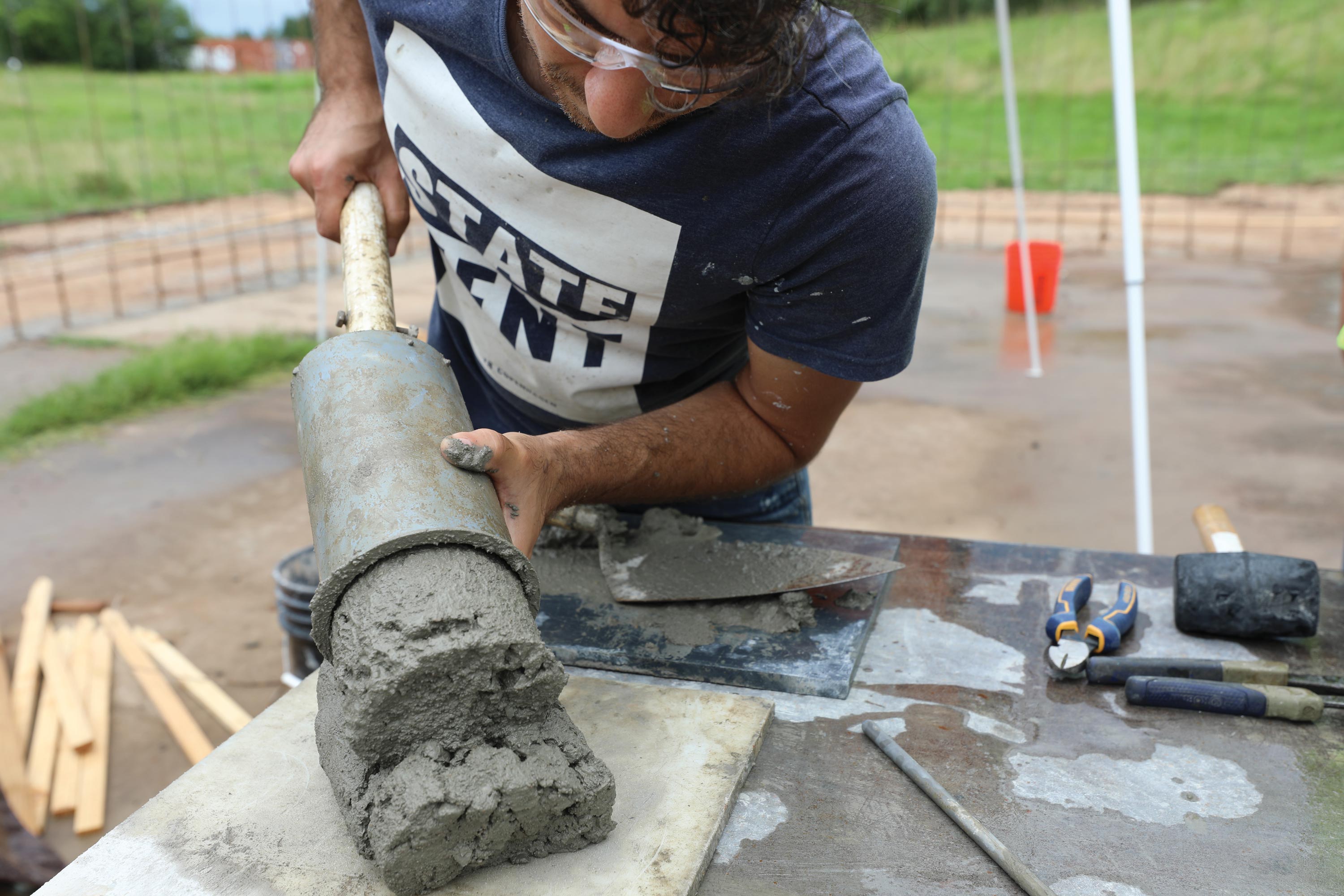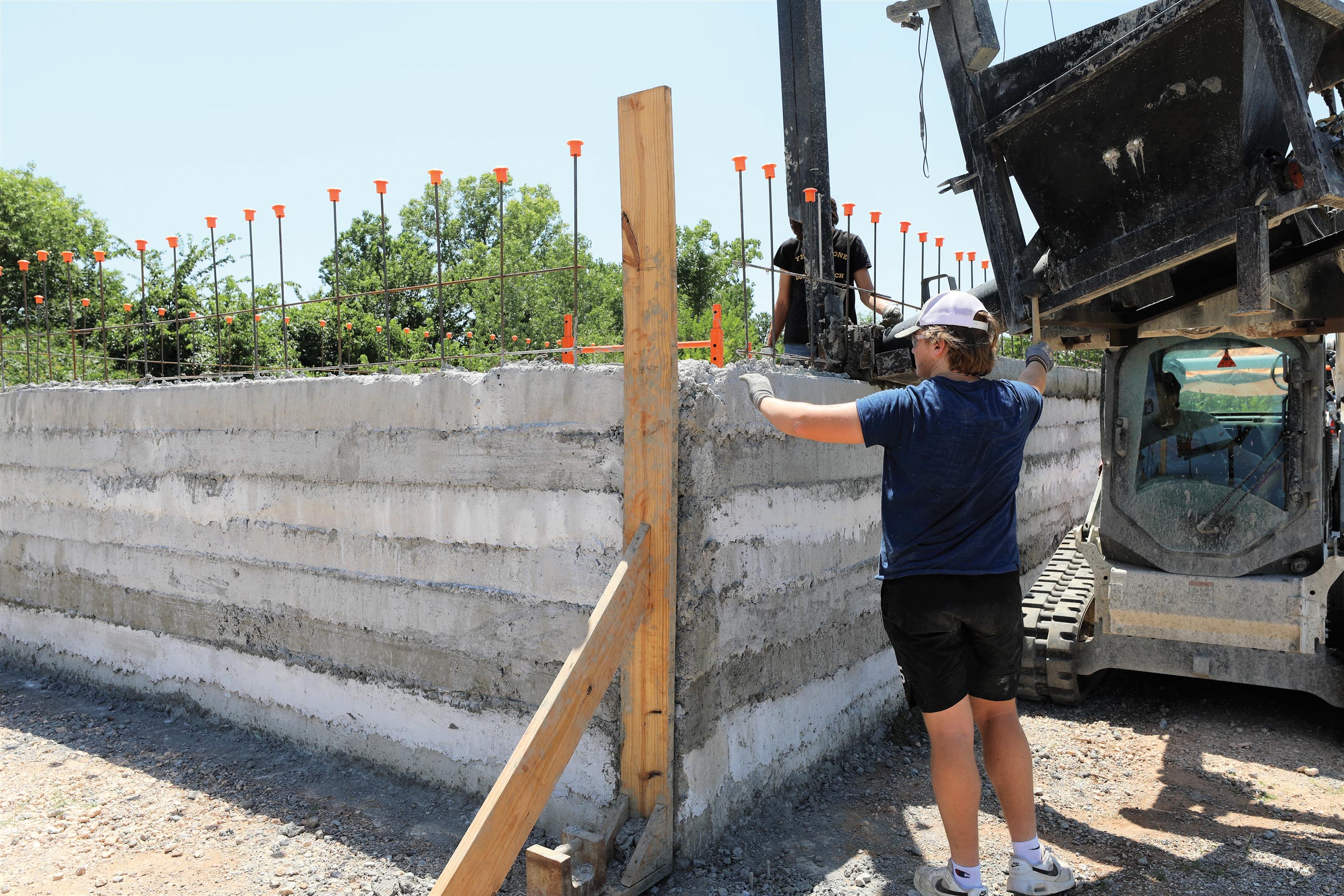
Multidisciplinary vision results in nation’s first vehicle-mounted 3D printed concrete structure
Monday, September 25, 2023
Media Contact: Kristi Wheeler | Manager, CEAT Marketing and Communications | 405-744-5831 | kristi.wheeler@okstate.edu
Have you ever wondered how a 3D printed concrete building is built? It all started with outgoing Dean Paul Tikalsky’s vision to start teaching multidisciplinary senior design classes at Oklahoma State University.
He knew that having students from different disciplines and diverse backgrounds working together as a team to solve problems was important and mirrored real world industry challenges.
He also knew Dr. Tyler Ley was an ideal fit for this task.
Ley, a professor in civil and environmental engineering (CIVE) with a research focus on concrete, was a little intimidated by teaching students in disciplines other than CIVE. He had collaborated in research with different disciplines, but he had never taught a class of interdisciplinary students.
“I supported Dean Tikalsky’s vision, and I wanted to help him however I could,” Ley said. “He shared some stories back from when he was a young faculty member, when he had to teach multidisciplinary senior design classes, and it sounded really fun! He told me a story about how they made a submarine that worked! This inspired me.”
POURING A FOUNDATION
At the time, Ley wasn’t happy with how 3D printed concrete was progressing in the industry.
He didn’t feel like it was practical. The mixes they use are quite different than the conventional concrete mixtures and replace the rock in the mix with only sand. Additionally, conventional 3D printed mixes are more expensive and less sustainable than traditional concrete mixtures.

To add to that, the 3D printing equipment currently used is complicated and needs specialized people to use it. The structures created also do not contain reinforcing. The reinforcing bars must be added later. Ley saw these challenges as a chance to use his multidisciplinary senior design class to focus on all aspects of 3D printing concrete. This means taking an innovative approach to all aspects of 3D printing and building the right team.
“Usually, I would just focus on the concrete mix itself, because that’s what I do, I’m a concrete guy,” Ley said. “But I know about construction. I have done construction and I understand the practical side of that. I decided that this is a perfect opportunity to bring a true interdisciplinary team together to focus on the machine, the structures, the mix, everything. This would include students with different backgrounds working to solve some of these big problems.”
Ley taught his first class with Jeanne Homer, an associate professor who has since retired from the School of Architecture. In that class, Homer had her students design a one-story home that could be 3D printed. It was designed to imagine how light would enter the building, how to heat and cool it efficiently, how to make it weather resistant to the environment, and a space that the owners would enjoy.
“At this time, we were using gantry systems to 3D print concrete,” Ley said. “A gantry system is similar to how plastic 3D printers operate. We quickly saw that there were going to be some problems. Gantry systems are cumbersome to set up and move around. The system would have to be as big as the building you are printing.
“If you wanted to do a multi-story building, you would have to have a tall gantry system to do that with. The tubes to feed the nozzle had to be small and this impacted the type of concrete that you could use, and the biggest issue is that it was not possible to add reinforcing bars to the concrete as you printed. We knew we needed to do some things very differently.”
Ley then started to co-teach with Jim Beckstrom, a professor of practice with extensive field experience in the energy sector who has retired from the School of Mechanical and Aerospace Engineering. Together, Ley and Beckstrom determined that they wanted to create a system that printed from the ground: a vehicular system. This led the team to use a forklift that was manually driven to create the first 3D printed concrete wall using a forklift.
The OSU system is named a BAM 3D printer. BAM stands for Box-Auger Method, which describes some of the key parts of the developed technology. There are distinct advantages to the OSU developed 3D printer. The printer is designed to be used on most construction vehicles. This means that existing contractors likely have a piece of equipment that can already use the technology with a human driver.
The printer uses large aggregates, and the mix can be ordered from a local concrete company and delivered to the site with typical concrete trucks. The printer can print around already tied rebar. This means that a crew can tie the reinforcing for the concrete and provide any electrical and plumbing utilities and the BAM 3D printer can place the concrete around it. The printer also smooths the concrete as it is being placed, which creates a finished surface as it leaves the machine.
“One day, Jaime and Mary were talking with a group of people in the department about the possibility of me printing a 3D printed concrete building for them. Just so happens, I was walking by right at that exact moment. I looked up and said “YES!”
“I was so proud of the students,” Ley said. “I was so proud of what they were able to accomplish, and that they were able to figure it out! From there, the students just built on and improved that system, to the system that we are using now. It’s cleaner, it’s more automated, and it’s more precise. It’s been so much fun to work with these students and watch them slowly keep building and improving.”
LET’S PRINT A BUILDING
Drs. Mary Foltz and Jaime Schussler joined the CIVE faculty at OSU in fall 2021 and fall 2022, respectively. Both have large field components to their research which involve taking samples and measurements.
Foltz’s research focuses on greenhouse gas emissions, agricultural nutrient cycling, passive treatment systems for biogeochemical water treatment and nature-inspired solutions to environmental issues. Schussler’s research focuses on stormwater management, specializing in erosion and sediment control.
“OSU has a lot of amazing facilities, but they really didn’t have a facility for Jaime and Mary to store their field equipment for their research,” Ley said. “One day, Jaime and Mary were talking with a group of people in the department about the possibility of me printing a 3D printed concrete building for them. Just so happens, I was walking by right at that exact moment. I looked up and said 'Yes!' I thought that this would be amazing! We immediately started collaborating on what needed to be done to make this happen.”
Foltz and Schussler used part of their startup package from the university to invest in this project. Ley contacted two companies — Dolese and MegaSpray — to see if they would be willing to provide funding for the project. Both companies were extremely supportive. Dolese has been an ardent supporter of OSU, CEAT and Ley’s research. MegaSpray has also been a longtime supporter of Ley and has provided substantial funding to OSU for past projects.
“It’s truly been a group effort,” Ley said. “It’s been a lot of weekly meetings and a lot of people out there doing the work. Mary and Jaime have been out cutting down trees to make room for the building. I’m reusing a concrete slab that I poured about a decade ago for a previous research project. We are reusing and recycling a lot of different things to minimize cost. Beckstrom continues to help us despite being retired from OSU. He’s brought a ton of knowledge and energy to this project. It’s been a true collaboration.”
Beckstrom’ s involvement in printing 3D structures with concrete started when he was the director of interdisciplinary in CEAT. Beckstrom, as professor in practice, with Ley and other professors “framed” the senior projects and mentored the work of the students for several semesters.

In the summer of 2020, Beckstrom redesigned and fabricated the concrete delivery system, enabling it to be powered and deployed by a skid steer. In the following two semesters, Beckstrom and Ley instructed and mentored student teams who tested various mixes, consolidation configurations, and positioning systems. Beckstrom retired from instruction and continued as a volunteer starting in June 2021, focusing on the mechanical delivery/placement system, positioning, and skid steer interface.
“The ability to produce code-compliant concrete walls without form work, using globally available equipment such as skid-steers, makes this technology amazingly scalable,” Beckstrom said. “It is exciting to be part of the OSU enabled technology.”
Masoud Forsat, Ley’s Ph.D. student, is doing his dissertation on the BAM 3D printer. He has been instrumental in improving the mix design and the printer and has been involved with this project for more than a year.
This will be OSU’s first 3D printed concrete facility and the first BAM 3D printed concrete structure in the world. The structure will meet all building codes and it is much more economical and easier to print compared to other 3D print technologies as everything is done from the ground. It’s vastly different than gantry systems that are used to print concrete structures.
PLANS FOR THE FUTURE
Ley and his team are actively looking for ways to collaborate with alumni, industry partners and others to use this new generation of 3D printers to create economical, efficient, sustainable, and durable concrete structures that are fire and insect resistant.
The team is constantly improving the machine’s automation, streamlining the construction process, building more structures, and showing the world what can be done with BAM 3D printed concrete.
Photos: Kristi Wheeler
Story by: Kristi Wheeler | IMPACT Magazine
